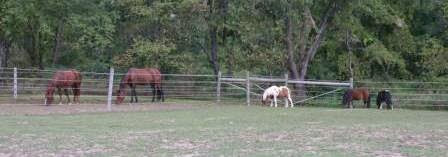At a conference I attended in 2013 for equine assisted
learning, a well-known speaker presented on the many aspects of how we perceive
and use power. She started out by asking
the audience how they defined power. Of course,
this was a group of people who partner with horses to provide professional
development and coaching, so they probably did not have a typical response
(power=dominance/control). But there
were people in the audience who quickly saw power as something negative.
In leadership development, one’s perception of power is a
critical issue to be defined because how one perceives and portrays power will
have a direct impact on how one leads.
As you are reading this, think about your own definition of power. Does the mere thought of power make you sit
up taller in your chair and think “Yeah, power is good. It makes me feel in control.” Or does the thought of power make you want to
crawl under your desk and close your door for the day? These are two extremes of how most people view
power and why it has a bad rap.
You see, I don’t see power as good or bad. It just is.
When exerted properly given the context of a situation, power can be
something that enables one to accomplish things that they did not know they
were capable of achieving – thus the concept of being empowered. In learning from my horses, who are my
co-facilitators in my experiential professional development program, I have
come to realize that power is merely a way to communicate. What makes power positive or negative is the intention behind it. Horses exert power all of the time when they
are interacting with each other as well as with people. As prey animals, every interaction that a
horse has is based on determining whether our intention is one of collaboration
or a threat. They prefer collaboration
so will seek to find ways to create that opportunity.
While working with an executive coaching client, the idea of
power being something other than dominance was a huge “A-ha” moment for this person. The client was tasked with showing power
while leading a horse through an obstacle course. That was it.
The client was anxious to get to the task as she had been excited about
all that she had learned during the first day of working with us. I walked the horse through the course to give
her an idea of what to do at each obstacle, then handed her the lead rope. She stepped off at a good clip, with the
horse hurrying to keep up with her. She
was standing tall and was very focused on getting the horse through the course,
keeping a firm grip on the leadrope as she walked. She completed the course and when she came
back to us for discussion, I asked her if she noticed how the horse was
reacting to her power in completing the task.
The client stated that the horse had seemed like she was in a hurry to
get through the obstacles. I suggested
the client try the course again, and this time to allow the leadrope to be a
bit longer and to pay close attention to her own breathing and intention. It was clear that having the leadrope loose
was a bit challenging for this very successful executive. However, as she moved through each obstacle,
it was clear that she was tuning in to her intention and what she was
communicating to the horse - the horse was walking calmly beside her, waiting for direction. By the time
the client finished the course, she and the horse were relaxed. Her first comment was “Wow – that was
amazing.” In discussing her use of
power, she said she realized that “power is not dominance” and that “power
changes.” There was a realization that
how she influenced the horse was not based on her controlling the horse through
dominance – it was based on being clear in her intention and creating trust with
the horse.
Power is something all of us have to learn to manage. The adage “Absolute power corrupts absolutely”
is not a misnomer. Power used for
selfish purposes likely will be negative for those on the receiving end. However, power that is used with the intent
to build trust and collaboration will likely be seen as a positive and the
person exerting that kind of power has the ability to be a more successful
leader.

